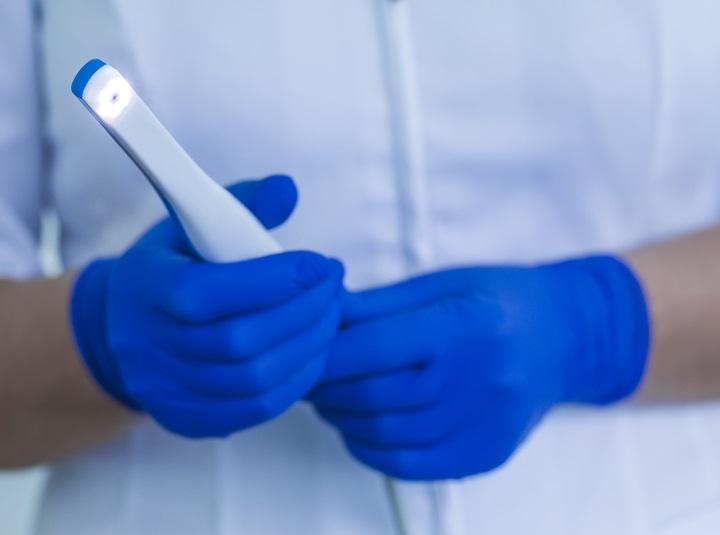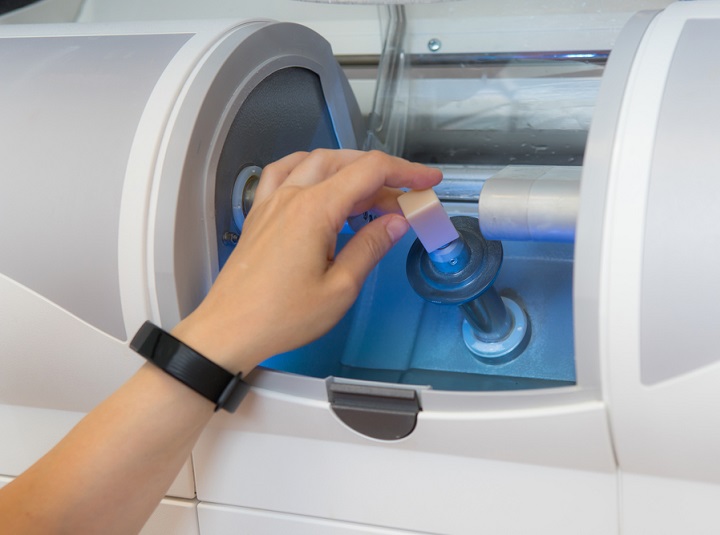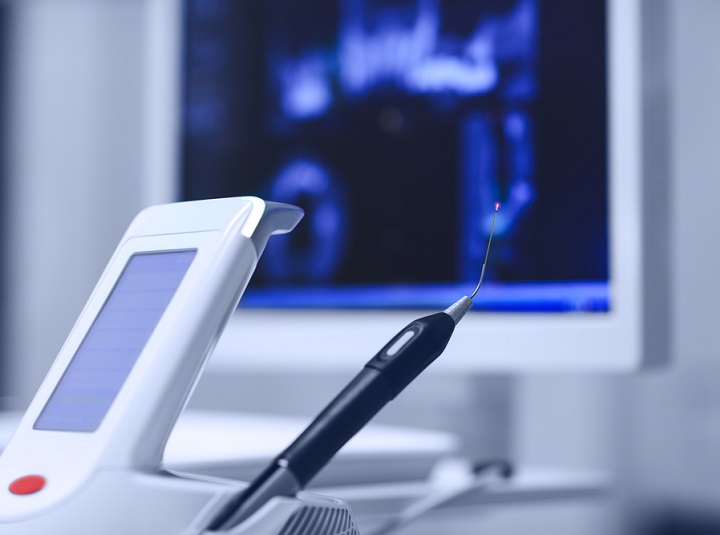Gone are the days when a trip to the dentist fills us with a sense of dread, envisioning uncomfortable and often painful procedures while the whirring of a drill hums in our ears. Thanks to revolutionary technological advancements in dentistry in recent years, caring for your teeth has become more comfortable and efficient than ever.
Let’s explore some of the latest dental equipment and technology changing the way we view dentistry.
Intraoral Cameras
 Intraoral cameras are small, pen-shaped digital cameras that transmit a live feed onto a screen. Even more convenient is the wireless technology behind them. Intraoral cameras connect to a computer by USB or a docking station, and your dentist can easily maneuver the small wand-like tip inside your mouth without discomfort. Because intraoral cameras typically are equipped with LED lighting, this eliminates the need for an external source.
Intraoral cameras are small, pen-shaped digital cameras that transmit a live feed onto a screen. Even more convenient is the wireless technology behind them. Intraoral cameras connect to a computer by USB or a docking station, and your dentist can easily maneuver the small wand-like tip inside your mouth without discomfort. Because intraoral cameras typically are equipped with LED lighting, this eliminates the need for an external source.
Another benefit is that because the feed is digital, the imagery is enlarged. You and your dentist can view magnified depictions of the inside of your mouth on a screen in real-time. This makes it easier to detect anomalies such as cracks, cavities, and decay that may be missed by the naked eye. It also provides better visual access to hard-to-reach places, such as molars and wisdom teeth in the back of the mouth.
CAD/CAM
 Biting into gritty putty to form impressions of your teeth is quickly becoming a thing of the past.
Biting into gritty putty to form impressions of your teeth is quickly becoming a thing of the past.
Thanks to computer-aided design and computer-aided manufacturing technology, or CAD/CAM, 3D images produced from optical scanners are used to create dental restorations such as crowns, veneers, and dentures right in the office.
Your dentist can use the CAD software to design the restorations, while the CAM portion mills and polishes them from ceramic. The result is a unique, well-fitting restoration that is easily cemented and installed in your mouth. The process is so efficient, that it can often be completed within one visit. This also reduces the cost of treatment as it eliminates the need for laboratory outsourcing.
Laser Dentistry
 Not too long ago, normal dental practice included the use of drills and scalpels to remove damaged or decayed portions of teeth and gums. Not only could these procedures be painful, but they typically damaged healthy areas of the teeth and gums due to their imprecise nature.
Not too long ago, normal dental practice included the use of drills and scalpels to remove damaged or decayed portions of teeth and gums. Not only could these procedures be painful, but they typically damaged healthy areas of the teeth and gums due to their imprecise nature.
Now, laser technology is revolutionizing this practice. Lasers use concentrated beams of non-ionizing radiation. The laser light is aimed at the target area, causing a reaction that results in the reshaping or removal of the affected tooth or tissue. The procedure is far more comfortable and efficient than traditional cutting or drilling and leaves healthy portions of the gum and teeth unharmed.
Augmented Reality
Augmented reality refers to a technology where fabricated images or videos are superimposed over real-world ones. When applied to dentistry, this means a patient can preview the results of their veneers, crowns, dentures, or implants before the necessary treatments and procedures even begin.
This is a highly effective tool in helping patients decide which treatments are right for them.
The Future of Dental Technology
While tooth and gum care remains the central focus, dentistry as we know it has been completely transformed in recent years. With new advancements and technology on the horizon, the future of dental practice is radiant.







